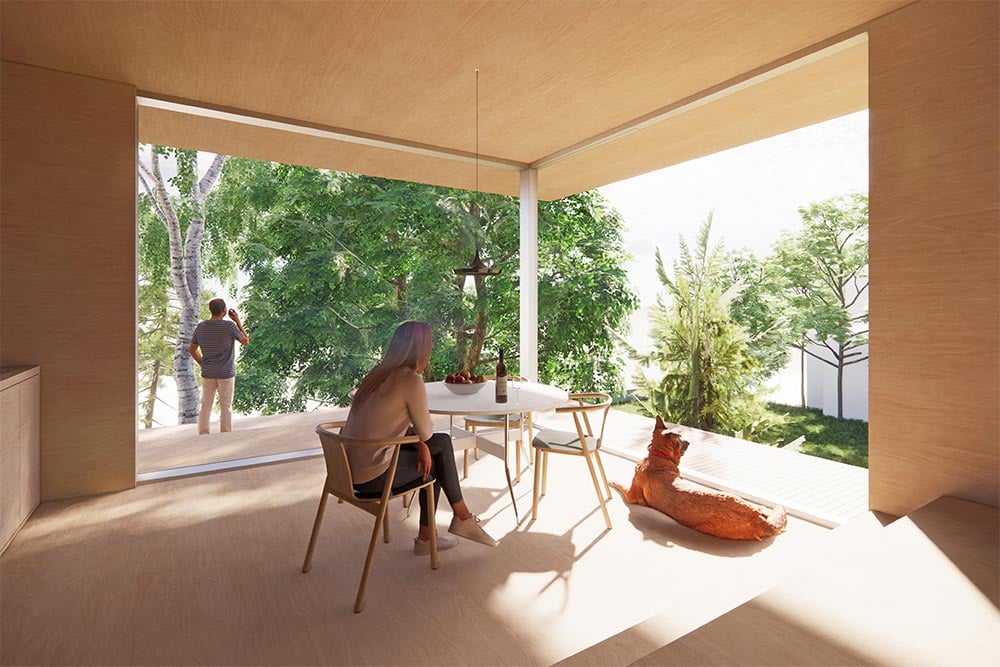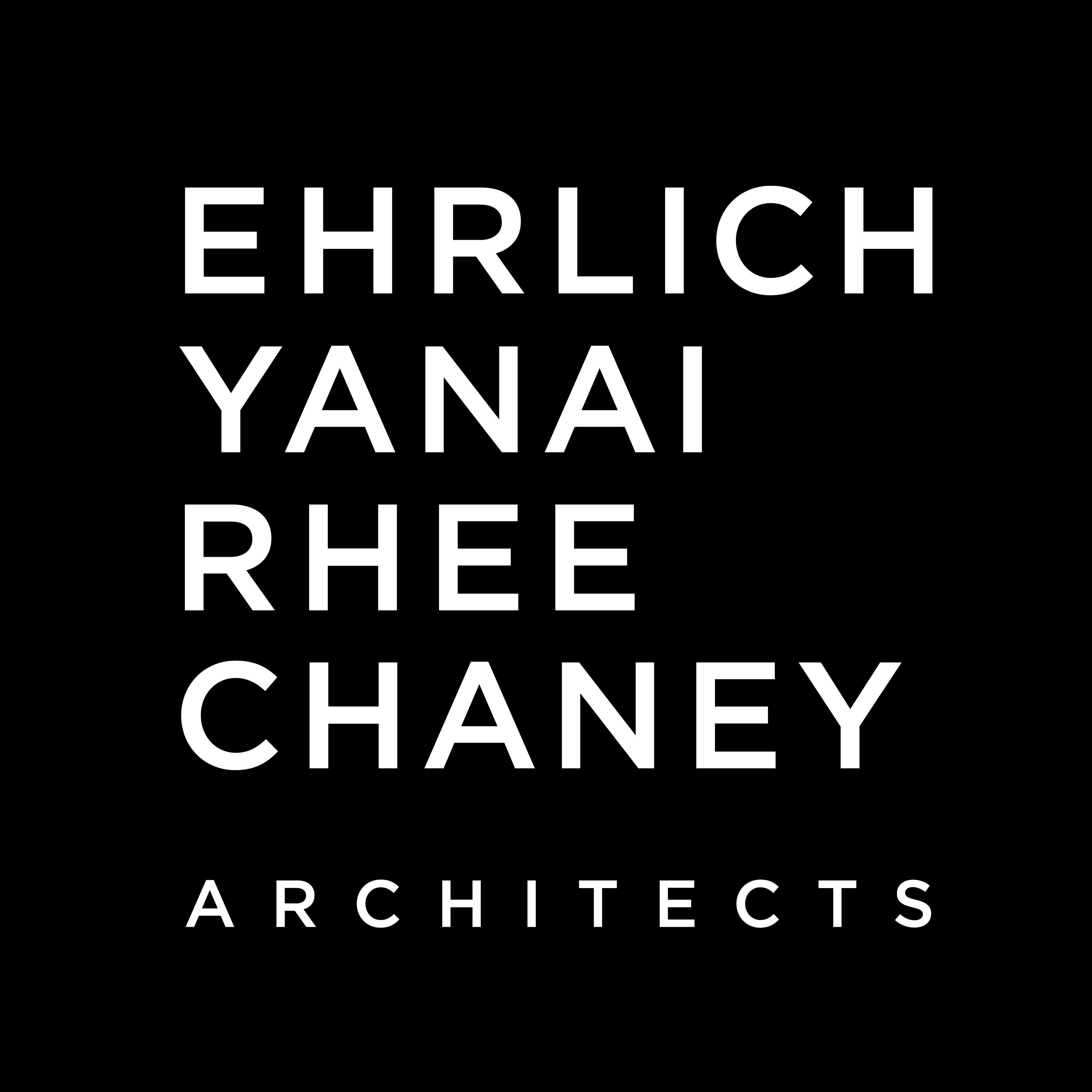
Whether you are in the process of designing a custom home or you are considering a major renovation, a guest house or accessory dwelling unit (ADU) can be an excellent means of increasing the functional space at your disposal. Guest Houses or ADUs are particularly relevant during the current pandemic, where our homes are used for so much more than they were before (office, classroom, gym, etc). This is space that can be used when you have guests, of course; but it is also space that you can leverage as a part of your everyday life.
When designing a guest house, we can begin to develop the design intent by asking a number of questions, such as:
- How will the space be used by guests? If the space is truly meant to function as a guest house, you should consider how autonomous the structure needs to be. Will it simply consist of a bedroom (or bedrooms) where guests will retreat to sleep in privacy? Will this be used by close family or visitors who might require additional amenities like a kitchenette or small living space?
- How much privacy is required? The level of privacy required depends on the specific use-case for the structure. If the guest house is meant to be a source of rental income, for example, a certain level of privacy is likely to be required by any guests or tenants. If, on the other hand, the structure is meant to house teen- or college-aged children, vacationing in-laws, or visiting friends, you may find that more or less privacy is necessary. The need for privacy can influence everything from the orientation of the structure to the surrounding landscape.
- How will the space be used when you don’t have guests? Most families do not entertain guests year-round. For this reason, your guest house should be designed with everyday use in mind. How would you like to use the space when you do not have guests? Will it function as a personal respite—for example, in the form of a spa, gym, meditation, or other wellness space? Or will it have a more practical use—for example, as an office or remote learning center?
- What is the architectural relationship between the structure and the main house? In most cases, we would recommend that the guest house reflects and echoes the same architectural style of the main house. On a macro level, this can be achieved by ensuring that key elements between the two homes feel cohesive—for example, the geometry and structure. But it can also be achieved on the micro level—for example, by ensuring that the same color and material palette are used in both structures.
The projects featured below showcase different approaches to creating an integrated, but detached, living space while in the process of designing your custom home.
Four Modern Guest Houses To Inspire Your Design
1. Waverley
The “back house” that was designed as a part of the Waverley residence is a perfect example of a structure that serves multiple purposes, and takes advantage of a special opportunity with this double-lot site.

On the one hand, a portion of the structure is reserved specifically for use as a guest house while a guest is staying the night with a dedicated bedroom and bath. When unoccupied, however, the bedroom space is unnoticed when viewed from the main home, shielded by a beautiful brick wall. This wall, in fact, doubles as a backdrop for art: In this instance, a sculptural piece that becomes a visual focal point for the yard.

The rest of the structure was designed for everyday use as a gym that is capable of being opened up directly into the yard on both sides of the structure. When open, the gym, paired with an exterior trellis and walkway, forms a sort of outdoor room that is at once connected with, yet separate from, the yard.
2. Kuhlman Road
The Kuhlman Road residence offers another example of a guest house that serves multiple purposes simultaneously, capable of acting as both a guest house as well as a pool house depending on the needs of the homeowner at any given time.

The design needed to address both of these use-cases, providing accessibility from the yard (for use as a pool house) as well as adequate privacy (for use as a guest house). To achieve this, a portion of the structure was designed to open into the backyard, while the bedroom was designed to turn away from the yard in order to create a sense of privacy.

While the guest house is indeed its own structure and is separate from the main house, it was designed so that it is complementary to the architecture of the main house—echoing both the materials and design of the main structure.
3. Ridge Mountain
Compared to the other examples on this list, the guest house at Ridge Mountain was deliberately designed to be visually distinct from the architecture of the main house.

The main structure of the home was designed to emerge from and, to an extent, blend into its environment—an effect largely achieved by the materials used in construction. The guest house, on the other hand, is designed to draw in the observer’s attention. A lighting component, paired with the clean white color of the interior, allows the guest house to serve almost as an art installation in the landscape.

Even when it is unoccupied, a portion of the guest house can be opened up to act as a covered outdoor space overlooking the pool, similar to a pavilion.
4. Mill Valley
This ADU was very specifically designed with post-pandemic considerations in mind. As such, it serves multiple purposes. It is a guest house when necessary, but otherwise functions as both an office for the homeowner’s consulting business as well as a personal respite.

Designed to be flexible in its use, this guest house includes a kitchenette for when it will be occupied by guests. A dining area doubles as a meeting space when the building is not occupied, and opens out onto a Japanese engawa-inspired deck that wraps the building. A lounge area also doubles as a sleeping space when necessary, making this guest house an exercise in multi-use. Open storage was incorporated throughout the unit so that the client would be able to display his whiskey bottle collection.

More Than A Place for Guests
As you can see, a modern guest house is capable of being so much more than just a place for visitors to spend the night. While that is, of course, a critical factor to consider, it’s also important to design a space that you can use in your everyday life, even when you do not have guests.

